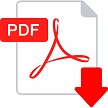ABOUT THE SEQUENCE
 S. D. Lobanov
S. D. Lobanov
Perm State Institute of Culture; Perm Federal Research Center Ural Branch Russian Academy of Sciences, Perm, Russia
e-mail: sdl-grey54@yandex.ru
Abstract. The relevance of the study lies in the fact that for the first time attention is drawn to the sequence – the concept that is formed by the relation, more precisely, the location, of the preceding and subsequent. How the preceding and the following are arranged is a question that is answered in one way or another by the study of the sequence. This is the arrangement of numbers in the Fibonacci sequence or bases in DNA and RNA molecules, etc. The purpose of the article is to show how these categories “work” in different types of sequence. The relation of the preceding and the following has a universal character and covers history, art, philosophy, science, i.e. culture as a whole. In the article, the sequence is investigated primarily through the relation of the beginning to the final (subsequent). The concepts of “a priori” and “a posteriori”, primary, secondary, principle, antecedent, consequent, etc. are considered here. Following the principles is a person’s personality. Another step in sequence research is the causal relationship. The problem is “sharpened” in the case of induction in the meaning of the relation to the future (inducing the future). What follows the present? The research method is interdisciplinary analysis. This kind of sequence is considered as following a rule, where “rule” means both a logical rule and an ethical one, and specifically, rules-sequences in customs, rituals, cooking, language, microbiology, etc. as well as examples-mottos “Follow the White Rabbit!”, “Follow the money”, “Follow the instructions,” etc. There is a separate question about followers, pedigrees, heirs: Who is a follower of this or that person? If language is a sequence of signs, is a monkey capable of arbitrarily typing Shakespeare’s plays on a typewriter? Outside of the theory of probability, obviously not, because the monkey does not understand what he is doing. The analysis of the “last” as the limit of the sequence is proposed: there is a preceding, but there is no subsequent. Several types of sequence are distinguished here: “divergent sequence” – there is no limit to its construction; “convergent sequence” – there are limits to its construction; a sequence whose elements are determined by necessity; a sequence whose elements are freely chosen. Cosmic and individual eschatology are distinguished. The study comes to the conclusion: consistency is a universal phenomenon and concept, a means of producing culture, or following principles, rules, patterns, symbols and, most importantly, other people. Sequencing of organisms is a classic example of the discovery of a fundamental sequence and the prospects for its further research, including philosophical ones.
Key words: sequence, preceding, following, followers, cause, effect, consequence, following, dynamic systems, location, last.
Cite as: Lobanov, S. D. (2023) [About the sequence]. Intellekt. Innovacii. Investicii [Intellect. Innovations. Investments]. Vol. 4, pp. 119–129, https://doi.org/10.25198/2077-7175-2023-4-119.


























